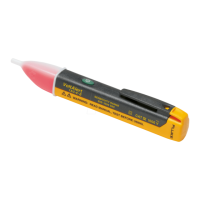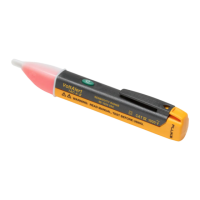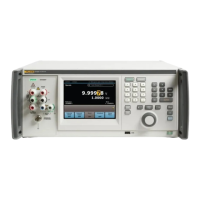Front Panel Operation
Setting the Output 4
4-25
4-26. AC Voltage Output
To set an ac voltage output, proceed as follows:
1. Make sure the calibrator is in standby (STANDBY annunciator lit). Press O if
necessary.
2. If the UUT is not connected, connect it now as described earlier in this chapter under
“Connecting the Calibrator to a UUT.”
3. Set the UUT to measure ac voltage on the appropriate range.
4. Press up to seven numeric keys to select a voltage output in volts or dBm.
In the ac voltage function, dBm means decibels relative to 1 mW, calculated for a
600Ω load. The formula to calculate dBm is 10 log (power in mW). For example, if
3.0V is supplied to a 600Ω load, the dBm level is:
10 log (15.0 mW) = 11.7609 dBm.
If you switch to Wideband AC output, but keep dBm as the displayed units, the dBm
value will change. The value changes because dBm is calculated for a 50Ω load in
the Wideband AC output function. Using the same voltage level as in the previous
example, if you switch to Wideband AC output, the dBm level changes to:
10 log (180.0 mW) = 22.5527 dBm.
5. To enter a negative dBm value, press +.
6. Press U, m, or K if necessary.
7. Press V for volts, or press D for a dBm level.
8. The Control Display now shows the amplitude of your entry. If you made an entry
error, press C to clear the display, then reenter the value. The following illustration
of the Control Display assumes an entry of 19V:
PREV
MENU

